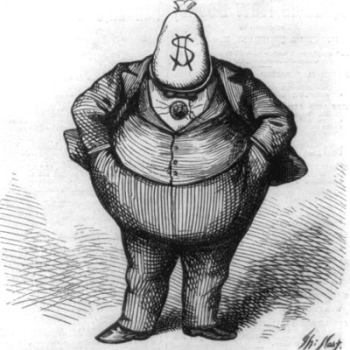Call it debt forgiveness, principle reduction, or restructuring, a hair-cut or a cram-down — call it whatever you like, but it increasingly seems as though some measure of Jubilee would be an immensely practical step for borrowers and for lenders and for the economy as a whole.
At this point the idea of such a Jubilee still probably only rates as practical and prudent. Soon it will likely shift into the categories of — in order — “necessary,” “urgently needed” and “too little, too late.”
Andrew Martin and Ron Lieber: “Fed Study of Student Debt Outlines a Growing Burden”
A report released Monday by the Federal Reserve Bank of New York … suggests that as many as 27 percent of the 37 million borrowers have past-due balances of 30 days or more.
The report, which was created by an analysis of Equifax credit reports, said the total balance of student loans was $870 billion. Of the 241 million with Equifax credit reports (there are 311 million people in the United States), 15 percent had student debt.
Forty percent of the people under 30 had outstanding student loans, and the average outstanding debt is $23,300. About 10 percent of borrowers owe more than $54,000 and 3 percent owe more than $100,000.
Bob Willis: “Student Debt Is Stifling Home Sales”
Last year outstanding education debt passed credit-card debt for the first time, according to Mark Kantrowitz, publisher of FinAid.org, a student loan website. Totaling close to $1 trillion, America’s mounting pile of outstanding student debt is a growing drag on the housing recovery, keeping first-time home buyers on the sidelines and limiting the effectiveness of record-low interest rates.
Daniel Luzer: “Bankruptcy Bill Time”
One of the more troublesome things about student loan debt in the United States is that, unlike normal consumer debt, it can’t be charged in bankruptcy.
If you’re broke and you can’t pay off your debts, you file for bankruptcy and the debts get restructured. If you’re broke and you can’t pay off your education debt, you just stay broke. The federal government can garner wages, Social Security, and even life insurance to service student loans.
… Markets need rules. Too many rules and the industry is stifled and can’t operate. Too few rules and the system becomes one of theft. Bankruptcy protection isn’t some special, sweetheart deal; it’s just the same thing that applies in commercial markets.
Shaila Dewan: “Pressure Grows on Fannie and Freddie to Cut Principal on Loans”
Edward J. DeMarco, the regulator who controls Fannie and Freddie … has come under increasing pressure to allow debt forgiveness, also called principal reduction, since the announcement of a multibillion-dollar foreclosure abuse settlement that requires banks to write down mortgage debt for some eligible homeowners. Loans backed by Fannie and Freddie — more than half of all outstanding mortgage loans — are not eligible for relief under the settlement.
Atif Mian and Amir Sufi: “How Debt-Ridden Housing Holds Back Recovery”
In a world without mortgages, falling house prices would have negligible aggregate effects. Some households would be richer and some would be poorer. But there is no reason to believe that there would be a large aggregate “housing-wealth effect.”
So why is housing holding back the economy? It is because most homeowners use substantial amounts of debt to purchase houses. Once we acknowledge that housing is a highly leveraged sector, the conclusions of the theory are totally different. In this case, there are a number of reasons why house-price declines will affect household spending.
Omar R. Valdimarsson: “Icelandic Anger Brings Debt Forgiveness in Best Recovery Story”
Icelanders who pelted parliament with rocks in 2009 demanding their leaders and bankers answer for the country’s economic and financial collapse are reaping the benefits of their anger.
Since the end of 2008, the island’s banks have forgiven loans equivalent to 13 percent of gross domestic product, easing the debt burdens of more than a quarter of the population, according to a report published this month by the Icelandic Financial Services Association.
… The island’s households were helped by an agreement between the government and the banks, which are still partly controlled by the state, to forgive debt exceeding 110 percent of home values. On top of that, a Supreme Court ruling in June 2010 found loans indexed to foreign currencies were illegal, meaning households no longer need to cover krona losses.
… Iceland’s approach to dealing with the meltdown has put the needs of its population ahead of the markets at every turn.
Once it became clear back in October 2008 that the island’s banks were beyond saving, the government stepped in, ring-fenced the domestic accounts, and left international creditors in the lurch. The central bank imposed capital controls to halt the ensuing sell-off of the krona and new state-controlled banks were created from the remnants of the lenders that failed.
Isabelle Roughol: “A 375-Year-Old French Bank Forgives Debts of Paris’ Poorest”
Thousands of lucky French people had their financial obligations forgiven after the country’s oldest bank decided to simply wipe their slate clean.
Granted, it’s a small slate. The 3,500 clients who benefitted from the bank’s largesse had debts of 150 euros or less (about $190) with the Crédit Municipal de Paris, also known as the “Mont-de-piété,” the bank of the poor, which has for centuries allowed the needy to get loans against their valuables — a kind of ethical pawnshop, or the original microlender. The small kindness was welcome for many.
Malcolm P. Harris: “The Dangers of Pricing the Infinite”
The more love you convert [into debt], the more guns you’re going to need.
See also:
- Thomas Storck: “Is Usury Still a Sin?“
- Nick Mirzoeff: “Endebt and Punish“
- Mike Konczal: “Has the White House Changed Its Tune on the Nature of the Recession?“
- Reuters: “Struggling Floridians line up for chance to plead to keep homes“
- Pat Garofalo: “‘Occupy Our Homes’ Looks to Save Fifth Detroit Resident From Foreclosure“
- Squashed: “Let’s Stop Blaming the Victims of Predatory Lending“












